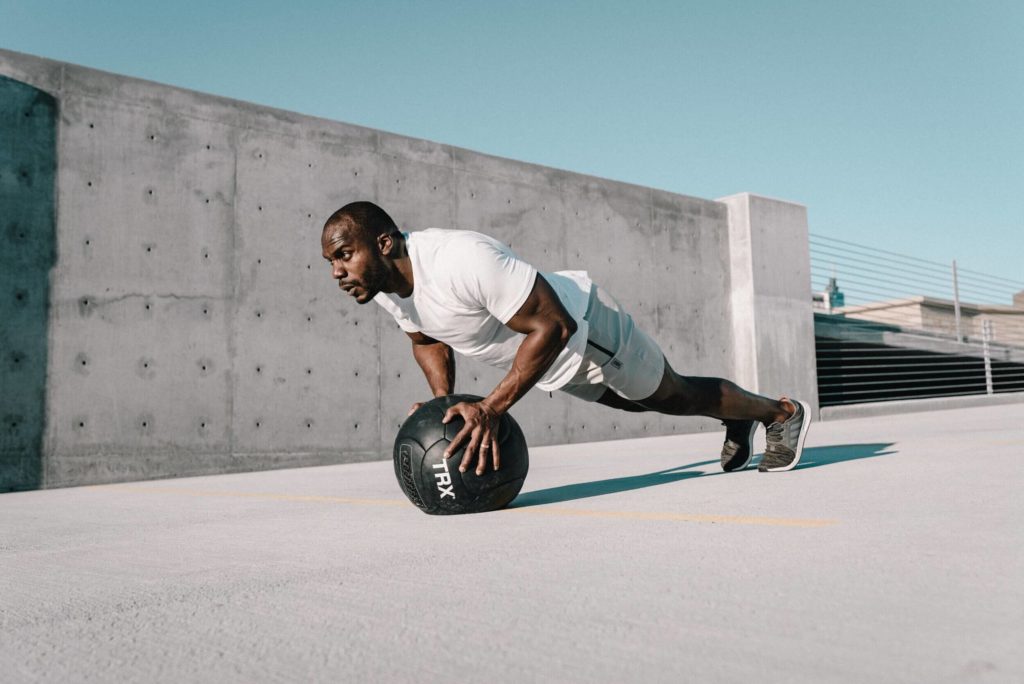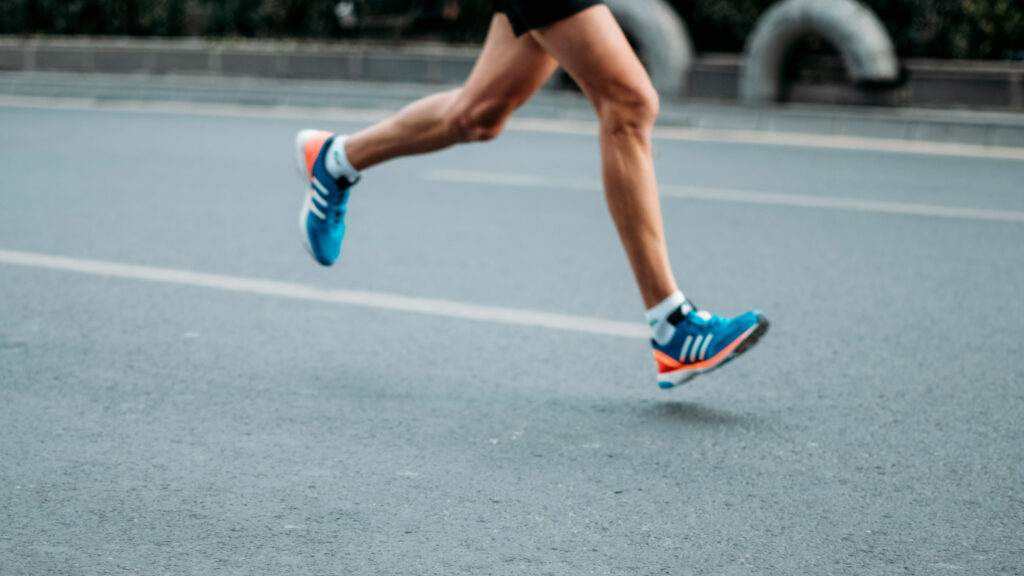People exercise at all times of the day, particularly when their work and personal schedules allow. However, research suggests that its effects on metabolic health vary, depending on the time of the workout.
Let’s first understand the various ways in which physical activity helps the body.
How does physical activity help insulin sensitivity?
Exercise or any form of body movement helps release the sugars stored in muscles, liver and fat cells. This process prompts the cells to effectively use insulin to function well and increase insulin sensitivity by workout.
There are two forms of exercise: vigorous/intense workouts and low/moderate-intensity activity. The difference between the two can be understood through the processes of anabolism and catabolism.
In catabolism, larger structures, like proteins, fats or tissues, are broken down into smaller units such as cells or fatty acids. The process involves disintegration and breaking down.
Anabolism bonds smaller units like nutrients, cells or amino acids together. Anabolism centres around growth, building and maintaining muscle mass (strength training); while losing fat and muscle translates into the catabolic state (aerobic or cardio).
Impact of high-intensity interval training (HIIT) on insulin sensitivity
High-Intensity Interval Training (HIIT) is a combination of strength training exercises and high-impact cardio with short periods of recovery. This brings us to aerobic and anaerobic exercises. This contrast is at the heart of the difference between HIIT and cardio.
Anaerobic (meaning without oxygen) refers to a higher-intensity version of physical activity that breaks down glucose for energy without using oxygen. It involves forms of exercise like HIIT and weight lifting.
Aerobic (with oxygen) exercise generates energy using an incessant supply of oxygen to sustain the activity level without an additional source of energy. It includes moderate-intensity and slow-paced exercises, like endurance cycling, yoga, water aerobics and jogging, and activities like cleaning, dancing, gardening, household chores and walking.
Let’s examine the processes at work during these activities.
Fast Twitch Fibres
While performing anaerobic HIIT exercises, type 2 muscle fibers are used up. These muscle fibres fire up easily and support intense physical activities. Also known as fast-twitch muscle fibres, they contract quickly and more vigorously. They are recruited during high-intensity but short-duration activities, like sprinting or lifting a really heavy weight.
Here’s how the process transpires:
- Intense exercise redirects blood from your liver and digestive system to your skeletal muscles.
- When your muscles function anaerobically, they voraciously consume the body’s stored fuel (called glycogen) without the accompaniment of oxygen. This leads to pain. Glycolysis takes place in muscle cells during high-intensity training without oxygen, producing energy quickly.
- The body receives signals from hormones to turn fat into glucose while minimising the pain and enhancing your mood.
- Muscles produce lactic acid as a by-product of intensive exercise and the pH of the blood around the muscles drops. This drop in pH eventually prevents the muscles from contracting further.At this point, you need to rest to allow the lactic acid to be metabolised.
- The brain consumes more energy during exercise to make neurotransmitters, while the heart beats faster due to the adrenaline elevation. When one works out regularly, the brain gets used to this recurring swell of blood and adapts by switching some genes on or off.
- The muscles of the ribcage help the diaphragm to consume more oxygen than at rest. Breathing assumes a faster and deeper tenor. Sweat glands produce sweat and waste heat is eliminated. Veins are squeezed by the muscles and they pump blood to the heart.
- Exercise also encourages the growth of new blood vessels, causing blood pressure to decrease in fit people.
Impact of mild cardio on insulin sensitivity
Low-impact cardio exercises or aerobic exercises cover a wide range of activities like swimming, running, walking, rowing, etc. It uses type 1 muscle fibres, also known as slow-twitch fibres. As the name suggests, these muscles are slow in creating tension and support low-intensity exercises
Low-impact or mild cardio exercise recruits the aerobic energy system, which employs fats, carbohydrates and sometimes proteins for re-synthesising ATP for energy use. Adenosine triphosphate (ATP) is an energy-carrying molecule found in the cells of all living things.
The three stages of ATP production are as follows:
- Aerobic glycolysis (slow glycolysis)
Aerobic exercise involves repeated and continuous movement of large muscle groups. These activities rely primarily on aerobic energy-producing systems. Your aerobic energy system employs oxygen to produce energy. This energy is then hoarded and applied for longer phases of exercise/activity at a low intensity. The system converts glycogen into glucose. - Krebs cycle (citric acid cycle)
Fatty acids (from fats) and amino acids (from proteins) are transformed into acetyl coenzyme A, which is a biological agent that works in the oxidation of fatty acids and metabolism of amino acids. The disintegration of glucose continues at this stage and results in the formation of the by-products carbon dioxide (CO2) and water (H2O), and the synthesis of more ATP. - Electron transport chain
Hydrogen is transferred to the electron transport chain, a series of four protein complexes that lead to the creation of ATP. Water is created as a by-product as hydrogen combines with oxygen.
Aerobic training increases mitochondrial density, insulin sensitivity, oxidative enzymes, compliance and reactivity of blood vessels, lung function, immune function and cardiac output.
Before understanding the pros and cons of the timings of a workout, it is important to know what metabolism and metabolic health mean.
Metabolism is a series of chemical processes in each cell that transform the calories we eat into fuel to keep us alive. These processes sustain life, everyday functioning and include breaking down food and drink to energy and building or repairing our bodies.
Metabolic health is described as having ideal levels of blood sugar, triglycerides, high-density lipoprotein (HDL) cholesterol, blood pressure and waist circumference, without using medications.
When it comes to exercise, the best time of day to get in a workout session is whenever you can do it consistently. The right time can vary from person to person due to factors such as lifestyle, age and preference.
There is no one-size-fits-all approach for the timing of workouts. However, let us still consider the pros and cons of working out at different times of the day.
Pros and Cons of Exercising in the morning
The early morning is considered the best time to work out due to a number of scientific reasons. However, working out at this time can also have some drawbacks.
11 Pros of training in the morning
Let’s first see why morning workouts are beneficial:
- Blood Glucose Control
Exercise plays an important role in managing type 1 diabetes by keeping blood glucose levels in check by increasing our insulin sensitivity, i.e., the body does not require as much insulin as it normally would to process carbohydrates.A 2015 study found that exercising in the morning reduces the risk of developing type 1 diabetes. - Better Sleep
Exercising first thing in the morning has been proven to enhance sleep quality in the nighttime. A study demonstrated that subjects got better sleep when they exercised early in the morning at 7 a.m. The study concluded that aerobic exercise at 7 a.m. invoked a greater dip in nocturnal systolic BP, (which is the amount of pressure your blood is exerting against your artery walls when your heart beats) than exercise at 1 p.m. or 7 p.m., although the greatest dip in nocturnal diastolic BP (pressure in the arteries when the heart rests between beats) occurred following 7 p.m. Compared to 1 p.m., 7 a.m. also invoked greater time spent in deep sleep.Exercising early in the morning in the sunlight can help improve the secretion of melatonin, the sleep hormone. Exposure to sunlight in the morning is known to enhance the secretion of melatonin.Studies have also shown that working out in the evening could hamper one’s sleep. The study showed that exercise increases your heart rate and body temperature, making it more difficult to fall asleep faster. - Blood Pressure Management
Exercising is considered one of the best ways to manage high blood pressure. A 2014 study showed that exercising in the morning could be the most effective way of managing high blood pressure. It included three separate sessions in which 20 prehypertensive adults, those who are at risk of high blood pressure in the future, exercised on a treadmill at 7 a.m., 1 p.m., and 7 p.m. The subjects wore a medical device to monitor their blood pressure response. It was concluded that the most favourable blood pressure changes happened on the 7 a.m. workout days. - Controlling Appetite
Exercise generally helps control appetite by reducing ghrelin, the hunger hormone.Research by BYU suggests that morning exercisers may have less of an appetite throughout the day. The study showed that 45 minutes of moderate-to-vigorous exercise in the morning helped to control a person’s appetite. The study, measured the food motivation of 18 normal-weight women and 17 clinically obese women over two days.On day 1, each woman walked on a treadmill for 45 minutes and within an hour had their brain waves measured. Electrodes were attached to each participant’s scalp and an electroencephalogram (EEG) machine then measured their neural activity while they looked at 240 images—120 of plated food meals and 120 of flowers. A week later, the process was repeated without morning exercise. The researchers found that the women’s brains had a stronger response to food photos when they hadn’t exercised in the morning. - More Fat Burning
Science has proved that working out early in the morning could have a greater impact on fat loss than during any other time of the day.A 2015 study showed that exercise before breakfast increased 24-hour fat oxidation more than any other time of the day.Another study indicated that working out in the morning after 8 to 12 hours of fasting during sleep may help to burn up to 20% more fat.
Additional Benefits of Morning Exercise
Apart from the metabolic health benefits there are several other improved benefits of working out in the morning:
- Focused Workouts
Morning workouts generally involve fewer distractions as you’re less likely to get phone calls, text messages and emails. Your to-do-list can remain intact by finishing the workout early in the morning. - Better Food Choices
A 2018 study that involved 2,680 college students following a 15-week exercise programme. Each week involved three 30-minute cardio sessions. The students who stuck to the programme made healthier food choices. What we can take away from this study is that exercising early in the morning can inspire us to make better food choices throughout the day. - Better Mood
Exercise is known to release endorphins, the happy hormones. So working out early in the morning can lead to an elevated mood throughout the day. - Increased Movement
A 2012 study showed that morning exercise can be associated with increased movement throughout the day. The study showed that walking for 45 minutes in the morning helped increase overall physical activity throughout the day. - More Energy
Contrary to popular belief, exercise when done properly actually increases your energy levels. Cellular-level changes occur inside your body when you exercise, which helps produce more mitochondria inside your muscle cells. Mitochondria help create fuel out of glucose from the food you eat and oxygen from the air you breathe. Having more of them increases your body’s energy supply.Exercising early may result in you having more energy throughout the day.
- Improved Focus
Exercise helps to improve focus and attention by boosting the brain’s dopamine, norepinephrine and serotonin levels—all of which affect focus and attention.A 2019 study found that morning exercise helped to improve attention and learning. The study involved a round of 8-hour days of prolonged sitting with and without a 30-minute morning walk on the treadmill. Some days, they took 3-minute walking breaks every 30 minutes. The study concluded that the days with morning exercise were associated with better cognition throughout the day, especially when paired with regular breaks.
Four Cons of Training in the Morning
Now, a few drawbacks of morning workouts are:
- Lower Energy
During the night, the body uses up your stores of glycogen, its main energy source. When you wake up, it takes some time and a nutrient-dense meal to replenish these energy stores. Although for fat loss this could be preferred in the morning since without glycogen your body breaks down fat for energy. But for athletes looking to perform at peak levels, this can be inefficient, as it causes them to get fatigued at a much faster rate as opposed to exercising later in the evening after they have consumed enough meals. - Tougher to Add Muscle
Since our muscles primarily use glucose as a source of energy for resistance workouts, a morning workout does not result in significant gains due to lowered strength from lack of glucose. One study found that skipping breakfast reduced the number of reps done in a morning workout. If you do have a meal before a morning workout, your body will need a couple of hours to refuel the glucose stores used up at night. This becomes an issue if you are running short of time. - Risk of Injury
The body is stiff and needs some form of movement in the morning, such as walking or stretching, before we engage in any form of exercise. Cold, stiff muscles can be more prone to injury. Warming up gradually increases your heart rate and breathing to a level that will be able to meet the demands of your workout. A study was conducted on 44 men to examine the effects of high-intensity exercise on the heart. The subjects performed 10 to 15 seconds of intense exercise on a treadmill, without a warm-up. The results showed that 70% of the subjects had abnormal ECG readings because of inadequate oxygen supplied to their hearts. - Changes in Metabolism
Working out in the morning hours boosts your metabolism early in the day, but your metabolic rate generally slows down in the evening. Evening and afternoon exercise boosts your metabolism later in the day, which is beneficial when dinner is your main meal of the day and provides the most calories. For both weight loss and weight maintenance, structuring your workouts to line up with your greatest calorie intake ensures the best results.
Pros and Cons of Exercising in the Afternoon
Getting a workout in the afternoon can be a tricky affair for most working professionals. However, the mass adoption of work from home (WFH) has allowed people to comfortably work out during this time of the day. Let’s jump into the pros and cons of afternoon workouts.
Here are some positive outcomes of afternoon workouts:
1. Optimal Body Temperature
A study examined how your body performs best in the afternoon. Your body temperature increases throughout the day, optimising your muscle function and strength, enzyme activity and endurance for performance. Your body temperature is highest between 2 p.m and 6 p.m. This means that you will be able to perform at peak capacity during this period.
2. Circadian Rhythm
Studies have found that the circadian rhythm, your internal 24-hour biological clock that governs mood, appetite and sleepiness, can affect athletic performance. As a result, at certain points of the day, especially the afternoon, athletes will be able to perform at peak potential.
This helps to explain how most Olympic records have been broken in the late afternoons or early evenings.
3. Regulation of Blood Sugar
The time after lunch is when most workers feel drowsy at their desks and feel the need for an afternoon siesta. This feeling of tiredness post a meal is referred to as postprandial somnolence. Consumption of excess carbohydrates and refined carbohydrates can cause blood sugar and insulin spikes, both of which will make you feel tired and this tiredness is the food coma you feel after the meal. This is a feature of diabetes. This process goes beyond just insulin resistance. Why does this cause you to be tired after eating?
The nervous system can be broken down into two parts: the parasympathetic nervous system (PNS), known as the ‘rest and digest’ part, and the sympathetic nervous system (SNS), the ‘fight or flight’ part. When you eat excess carbohydrates you are activating the PNS and inhibiting the SNS. The process mentioned above reduces blood flow to the brain. It decreases the arousal pathways of the brain—the hypothalamus, the part of the brain balancing bodily fluids—thus making you tired.
Exercise is known to reduce blood sugar. A study showed that individuals at risk of diabetes who exercised in the afternoon had better blood sugar control and lost more belly fat than those who worked out in the mornings. Men at risk of type 2 diabetes who worked out between 3 p.m. and 6 p.m. significantly improved their average insulin sensitivity as opposed to those who worked out between 8 a.m. and 10 a.m.
4. Building Muscle
Studies have shown that 3 p.m. to 7 p.m. could be the ideal time to work out, as lung function is best from 4 p.m. to 5 p.m. This may help you reach peak level of performance.
5. Perceived Exertion
When working out, we must ensure that we are working at a pace that is intense enough to provide us results and help us reach our goals without overexerting our bodies. We can measure this intensity by the rate of perceived scale of exertion (RPE). The standard rating on the scale measures from 6 to 20. Several cues such as breathing pattern, sweat, and fatigue level are measured.
The beginning level of the scale is level 6, where you are static. Level 9 is considered an easy pace. The levels between 12 and 14 are considered moderate-intensity; these include a brisk walk or slow jog. At level 15 and above you are in the vigorous-intensity zone (running), which is difficult. Level 20 is the maximum level of exertion and cannot be maintained for long. The Borg Method helps to measure your heart rate during activity. You can multiply your RPE by 10 to get an estimated heart rate. For instance, if your RPE is 12, then your heart rate is 12 x 10 = 120 beats per minute.
Studies have shown that RPE is lowest in the afternoon, which means you can exert yourself more while feeling it less, so you may be able to do a more vigorous workout in the afternoon.
You can also measure your heart rate using a heart rate monitor.
6. Increased Testosterone Production
Testosterone is a hormone found in humans. In men, the testicles primarily make testosterone. Women’s ovaries also make testosterone, though in much smaller amounts. Apart from the multiple functions that testosterone has on our bodies, the growth and maintenance of muscle mass is one of the primary functions of the hormone.
Studies have shown that your body might produce more of it during afternoon workouts than morning workouts, resulting in greater strength and muscle gains.
Two Cons of training in the Afternoon
The following are some disadvantages of exercising in the afternoon:
Poor Lung Function
Studies have shown that lung function is worse afternoon in people with chronic obstructive pulmonary disease (COPD), a type of lung disease. The individual may not be able to notice this while taking a brisk walk, however, when doing a vigorous workout, they may feel a dip in performance during this time of the day.
Scheduling Problems
For most of us, the afternoon is generally a time between the start and end of work. So we may not be able to efficiently plan our workouts as per schedule. It is important to stick to a scheduled workout plan to achieve our goals. However, this plan can get disrupted due to work commitments.
Pros and Cons of Evening Exercises
Evening time is arguably most people’s preferred time to get in a workout. Let’s dive into the pros and cons of the evening workout.
Five Pros of training in the Evening
Suppressing Hunger Hormones
Ghrelin, the hunger hormone, stimulates appetite and increases food intake. It is released in small amounts by the pancreas, small intestine and the brain. A study has found that exercising late in the evening can help to suppress the levels of ghrelin, which could help with weight loss or management.
This can help people to suppress unnecessary nighttime snacking.
Improved Reaction Time
Studies have shown that performance in the evening is at its quickest, which is important for high-intensity interval training (HIIT) or speed work on the treadmill. One’s heart rate and blood pressure are at their lowest in the evening, which could help reduce the risk of injury.
Boost Metabolism, Control Blood Sugar and Reverse Impact of a Greasy Meal
Researchers investigated the metabolic health of 24 inactive men who were at risk of type 2 diabetes and given a high-fat diet. They found that exercising in the morning or evening induced similar improvements in cardiorespiratory fitness, but nocturnal glycaemic control only improved in the evening exercise group. Twenty-four inactive men between the ages of 30 and 45, with a body mass indices (BMIs) ranging from 27 to 35 (overweight or obese), were recruited. They were given a high-fat diet for 11 consecutive days. None of the participants had type 2 diabetes or cardiovascular disease, but all were at risk of developing the conditions. The participants were divided into three groups: those who exercised in the morning, those who did it in the evening and those who got no exercise at all. Within five days, the metabolic benefits of evening workouts over morning exercise were clear with decreases in fasting blood glucose, insulin, cholesterol, triacylglycerol and LDL Cholesterol. The study also highlighted that ‘late-day workouts moderated the undesirable health effects of a greasy diet, while morning exercise did not’.
Boosting Nutrition
A study involving young, active individuals split into 2 groups- the first drank a protein drink after working out and before bed and the second consumed a placebo. It was found that the first group had a higher concentration of amino acids.
More Time for Workouts
Working out in the evening could help to destress from a hectic day. Studies have also shown that exercise can help you fight future stress. Working out in the evening also provides you more time for your workouts because you are generally done with work by the end of the day and are not bound by time as against morning workouts.
Three Cons of training in the Evening
Disrupted Sleep
Exercise closer to bedtime has been known to disrupt sleep patterns. Vigorous exercises like sprinting, HIIT or heavy-resistance training are known to increase the heart rate; therefore, falling asleep after a workout would take time as our heart rate would be at elevated levels. Studies have shown how evening workouts can negatively impact your sleep efficiency and cause you to wake up more times during sleep.
However, the same study also stated that evening workouts may not disrupt sleep as long as you’re doing moderate exercise, like a run or bike ride. A moderate workout before sleep could also increase slow-wave sleep,the deepest stage of sleep.
In case one ingests any form of caffeine before an evening workout, that can also have a negative impact on sleep. Caffeine is known to have a half-life, which means it can take 5–8 hours to get completely eliminated from our bodies. Caffeine blocks the sleep-inducing adenosine receptors that latch onto your brain.
Working out with a Partner
For most people, working out with a partner or a group provides that additional motivation and another reason to be consistent. Not having a partner due to late-night workouts can be a cause for demotivation. Studies have shown that those who worked out in groups had higher perceived physical and emotional health than those who worked out solo.
Consistency
Working out in the evening may not always pan out as per schedule as work can get stretched beyond regular hours or a spontaneous plan from family and friends can force us to change the timing of the work out. These things are unlikely to happen in the morning. In fact a 2018 study showed that people who exercise in the morning are most likely to stay consistent with their workouts than those who exercise in the afternoon or evening.
Conclusion
Morning workouts seem to have more benefits than evening or afternoon workouts. But, along with the benefits, there are also downsides to various workout times. The important thing is to exercise regardless of the time of day because exercising itself is going to bring about a multitude of benefits for our metabolic health; choosing a time of day to work out will simply provide you with marginal benefits. Prioritising to exercise 3–4 times a week, whether in the morning, afternoon or evening, is crucial, and the bottomline is to follow your schedule consistently.
Disclaimer:The contents of this article are for general information and educational purposes only. It neither provides any medical advice nor intends to substitute professional medical opinion on the treatment, diagnosis, prevention or alleviation of any disease, disorder or disability. Always consult with your doctor or qualified healthcare professional about your health condition and/or concerns and before undertaking a new health care regimen including making any dietary or lifestyle changes.
References
- https://www.liebertpub.com/doi/10.1089/met.2018.0105
- https://www.healthline.com/health/fitness-exercise/anaerobic-exercise#aerobic-vs.-anaerobic
- https://www.issaonline.com/blog/index.cfm/2018/type-iia-muscle-fibers-training-for-explosiveness
- https://www.huffpost.com/entry/body-on-exercise-what-happens-infographic_n_3838293
- https://www.ptdirect.com/training-design/anatomy-and-physiology/the-aerobic-system








